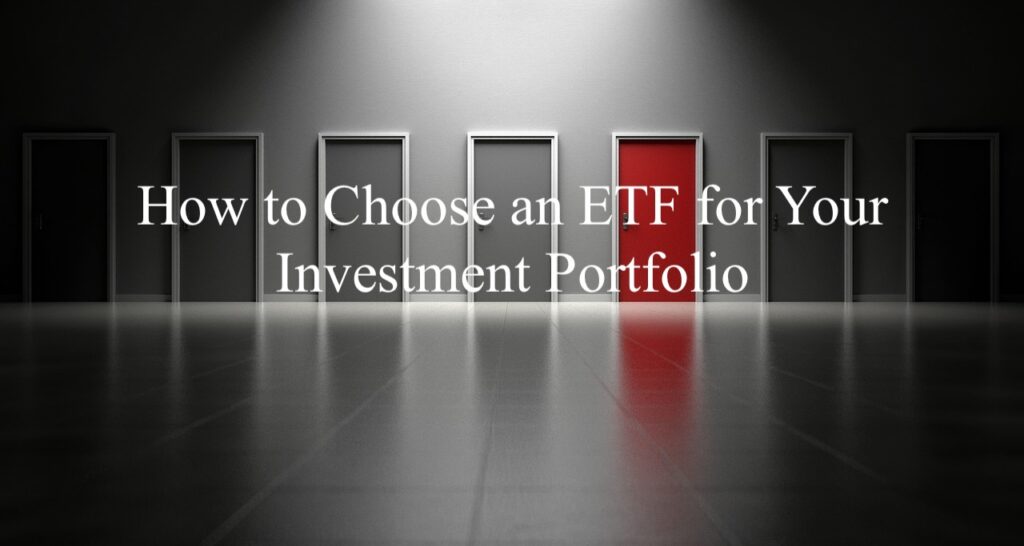With the surge in popularity of exchange-traded funds, some investors are still looking for guidance on how to research and choose an ETF.
Exchange Traded Funds (ETFs) are investment vehicles that offer investors a cost-effective, diversified, and simple way to gain exposure to various asset classes and sectors. ETFs are traded on stock exchanges like individual stocks and provide investors with broad exposure to a market, a specific sector, or an industry. They are managed passively, meaning that they track the performance of an underlying index rather than being actively managed like mutual funds. The following are some factors to consider when investing in an ETF.
Affiliate
StockRover is one of the best stock, ETF, and mutual fund screeners and analysis tools. It has 8,500+ stocks, 4,000 ETFs, and 40,000 mutual funds. You can get access up to 650+ metrics and financial data. The award winning Stock Rover platform includes watchlists, portfolio integration, portfolio rebalancing, e-mail and text alerts, future income forecasts, etc.
How to Choose an ETF
1. Determine Your Investment Goals and Risk Tolerance
Before choosing an ETF, it’s essential to determine investment objectives. What do you want to achieve with your investment? Do you want to generate income or capital growth? How much risk are you willing to accept? The answers will help you choose the suitable ETF. If you’re a risk-averse investor looking for steady income, consider investing in bond ETFs. Alternatively, consider investing in equity ETFs if you’re willing to take on more risk for higher returns.
2. Choose Your Asset Class, Sector and Index
ETFs can provide exposure to various asset classes, such as equities, bonds, commodities, and real estate. Each asset class has its own risk profile, so as discussed, choosing an asset class that aligns with your investment goals and risk tolerance is important. Many investors choose to split their funds between bond ETFs which are conservative, and more aggressive equity ETFs. Bond ETFs offer stability but with modest returns. In contrast, equity ETF values can fluctuate but have more growth potential in the long run.
After choosing the asset class, you can further narrow your choices by selecting a specific sector. If you’re interested in a particular sector, you can choose an ETF that tracks an index focused on that sector. For example, if you’re interested in investing in the technology sector, you can select an ETF that tracks the performance of the NASDAQ or the technology sector, like the Invesco QQQ Trust ETF (QQQ). But if you’re looking for a broadly diversified ETF, you can consider one that tracks a major stock market index, such as the S&P 500 Index, like the Vanguard S&P 500 ETF (VOO). Whether you choose VOO or QQQ depends on your investment goals, risks tolerance, and other factors.
Investors can further narrow their ETF choices to certain industries. You can combine broader equity and bond ETFs with industry-specific ETFs. For example, if you feel energy stocks provide decent long-term returns but want wider exposure, energy ETFs may be a good selection.
3. Determine Trading Costs and Fees
When considering the purchase of an exchange-traded fund (ETF), it’s important to check for any associated fees. These fees can vary between different ETFs and can impact your overall return on investment. The first fee to look for is the Operating Expense Ratio (OER), which is the cost of managing the fund and is expressed as a percentage of the total assets in the fund. The OER is an ongoing cost for managing the portfolio.
“Beware free ETF’s with 0.00% annual expenses,” says Matt Smith, CFA®, CFP®, CIMA®, CAIA® of Concert Financial Planning, “as they’re likely new and may have wider bid/ask spreads that outweigh the minimal savings you get for the zero fee, when compared to an established ETF with a very small annual expense.”
You should also look for any transaction fees, such as brokerage commissions or bid-ask spreads, which can be charged when buying or selling ETF shares. Also, some ETFs may have additional costs, such as redemption fees or account maintenance fees. Review the ETF’s prospectus or consult a financial advisor to learn more about the cost. By understanding the fees associated with an ETF, you can make an informed decision about whether it’s a good investment for your portfolio.
4. Consider the Level of Assets and Trading Volume
Higher levels of assets under management (AUM) can indicate greater demand for the ETF, which can lead to increased liquidity and narrower bid-ask spreads. Similarly, higher trading volume can indicate greater liquidity and easier access to buying and selling the ETF. According to Christopher Berry, JD, CFP®, CELA® of Castle Wealth Group,
“You want to ensure that the ETF is traded frequently, has a low bid-ask spread, and has enough assets under management to ensure that you can easily buy and sell shares when you want to.”
However, high assets and trading volume do not always indicate good investment performance, and investors should carefully examine the ETF’s underlying holdings, fees, and investment objectives before making investment decisions.
5. Consider that Age of the Fund
The age of an ETF can be an important consideration when investing. Older ETFs tend to have a longer track record, which can give investors more confidence in the ETF’s performance. Jon McCardle, AIF, of the Summit Financial Group of Indiana, checks for a change in strategy, illiquidity periods, drift, etc.
Also, older ETFs may have more assets under management. While past performance doesn’t guarantee future results, it can provide insights into how the ETF has performed in different market conditions. Investors can research and review an ETF’s performance on its website or prospectus.
Do Your Research Before Choosing an ETF
Choosing an ETF requires careful consideration of your investment goals, risk tolerance, asset class, sector, expenses, trading volume, holdings, and historical performance. Researching and choosing an ETF that aligns with your investment objectives and fits your portfolio is essential. Investors should consider diversifying their portfolio by investing in multiple ETFs that provide exposure to different asset classes and sectors. By choosing the right ETFs, you can achieve your investment goals while minimizing risk and maximizing returns over the long term.
Related Articles on Dividend Power
Here are my recommendations:
Affiliates
- Simply Investing Report & Analysis Platform or the Course can teach you how to invest in stocks. Try it free for 14 days.
- Sure Dividend Pro Plan is an excellent resource for DIY dividend growth investors and retirees. Try it free for 7 days.
- Stock Rover is the leading investment research platform with all the fundamental metrics, screens, and analysis tools you need. Try it free for 14 days.
- Portfolio Insight is the newest and most complete portfolio management tool with built-in stock screeners. Try it free for 14 days.
Receive a free e-book, “Become a Better Investor: 5 Fundamental Metrics to Know!” Join thousands of other readers !
*This post contains affiliate links meaning that I earn a commission for any purchases that you make at the Affiliates website through these links. This will not incur additional costs for you. Please read my disclosure for more information.
Nadia Tahir is a freelance writer and content creator. She mostly writes in the areas of lifestyle and personal finance. She also enjoys writing on her blog about motherhood at This Mom is On Fire.
Related





